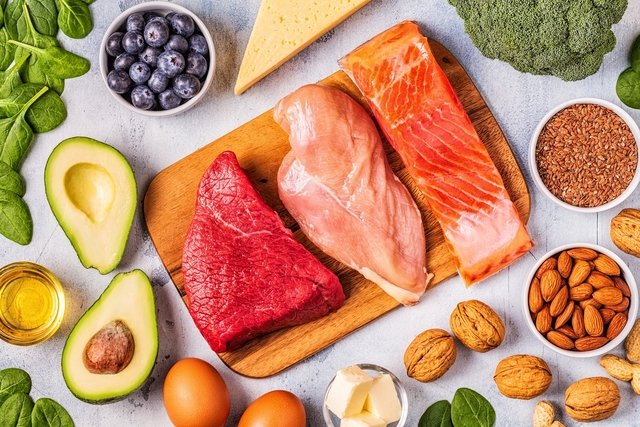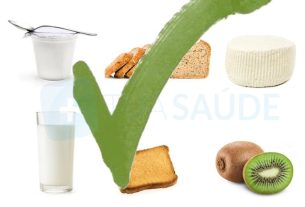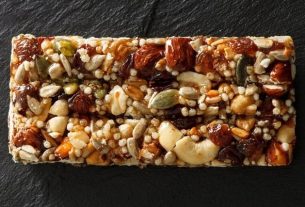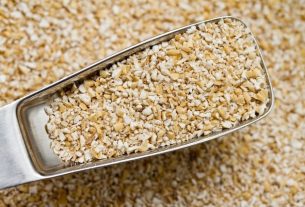Valine, or L-valine, is an important amino acid for maintaining the functions of the nervous system, regulating the immune system, in addition to acting on muscle growth and healing, as it improves tissue regeneration.
Valine, along with leucine and isoleucine, is one of the 3 essential branched-chain amino acids, BCAA, which the body cannot produce. Therefore, valine must be obtained through the consumption of foods rich in proteins, such as meat, fish, soy, eggs, dairy products and nuts, for example.
In addition, valine is also found in dietary supplements, which are generally indicated to promote muscle mass gain, increase performance and strengthen the immune system.

What is it for
The main functions of valine are:
1. Maintain nervous system functions
Valine helps maintain the functions of the central nervous system, as it participates in the formation of proteins that act in the formation of adrenaline and acetylcholine, neurotransmitters responsible for transmitting the nerve impulses that generate thoughts, emotions and commands for the body to move. and function properly.
2. Regulate the immune system
Valine helps to strengthen the immune system by acting in the production of proteins, essential nutrients for the formation of antibodies and the body’s defense cells, thus protecting the body against diseases and infections. Discover all the properties of proteins.
3. Promote healing
Valine promotes the healing of wounds and surgical cuts, as this amino acid is important for the formation of new tissues, blood vessels, cells and collagen. Check out a list of foods that help with healing.
4. Promote muscle mass gain
Valine promotes muscle mass gain as it is an amino acid that improves physical performance, reduces fatigue and stimulates muscle recovery after exercise, thus helping the production of muscle tissue.
However, to obtain the benefits of valine in gaining muscle mass, it is also important to practice physical activity regularly and maintain a healthy and varied diet. Find out how to follow a diet to gain muscle mass.
5. Detoxify the body
Valine detoxifies the body because it helps remove excess toxic nitrogen from the liver and can also help treat liver and gallbladder diseases. See other ways to detoxify the liver.
Additionally, valine may be prescribed by your doctor to help treat or reverse hepatic encephalopathy or alcohol-related brain damage because it repairs liver damage caused by alcoholism.
Foods rich in valine
The following table indicates the amount of valine in 100 g of each food:
Additionally, some cereals such as quinoa, corn, rye and barley, eggplant, beets, garlic and onions also contain small amounts of valine.
As valine is not produced by the body, it is recommended to consume this amino acid through food.
Recommended daily amount
The recommended daily amount of leucine varies depending on age and gender, as follows:
- Children aged 7 to 12 months: 58 mg/kg body weight of valine per day;
- Children aged 1 to 3 years: 37 mg/kg body weight of valine per day;
- Children aged 4 to 8: 28 mg/kg body weight of valine per day;
- Boys aged 9 to 13: 28 mg/kg body weight of valine per day;
- Girls aged 9 to 13: 27 mg/kg body weight of valine per day;
- Boys aged 14 to 18: 27 mg/kg body weight of valine per day;
- Girls aged 14 to 18: 24 mg/kg body weight of valine per day;
- Adults aged 19 and over: 24 mg/kg body weight of valine per day.
Pregnant women need to consume 31 mg of valine for every kg of body weight per day. Furthermore, during breastfeeding, it is recommended to ingest 35 mg of valine for each kg of body weight daily.
Valine deficiency
Valine deficiency can cause sleep disorders, nervousness, hyperactivity, impaired child growth, loss of muscle mass and hypotonia
When to use supplements
Valine supplements may be indicated in cases of deficiency of this amino acid, to help treat liver problems or to help increase muscle mass gain, for example.
The valine supplement can be used alone in the form of capsules, and can be taken before or after training and the recommended amount can vary from 500 mg to 10 g per day, according to the advice of a doctor or nutritionist.
Furthermore, the valine supplement can also be sold together with leucine and isoleucine, as in the case of BCAA, which is widely used by people who practice physical activity. Learn more about BCAA.
Possible side effects
Using a valine supplement can cause nausea, abdominal pain, vomiting and diarrhea. Additionally, taking valine supplements alone can cause an imbalance in other amino acids in the body, preventing some amino acids from working properly.
Taking high doses of valine or using it for a long time can also cause liver or kidney problems. This occurs because the liver and kidneys are responsible for the degradation of valine and other amino acids.
Who shouldn’t use
People with maple syrup urine disease, which is a rare inherited disease, should not use valine supplements.
Pregnant or breastfeeding women, as well as children, people with diabetes or liver problems, should only use valine supplements under the recommendation of a doctor.

Sign up for our newsletter and stay up to date with exclusive news
that can transform your routine!
Warning: Undefined array key "title" in /home/storelat/public_html/wp-content/plugins/link-whisper-premium/templates/frontend/related-posts.php on line 12
Warning: Undefined array key "title_tag" in /home/storelat/public_html/wp-content/plugins/link-whisper-premium/templates/frontend/related-posts.php on line 13



